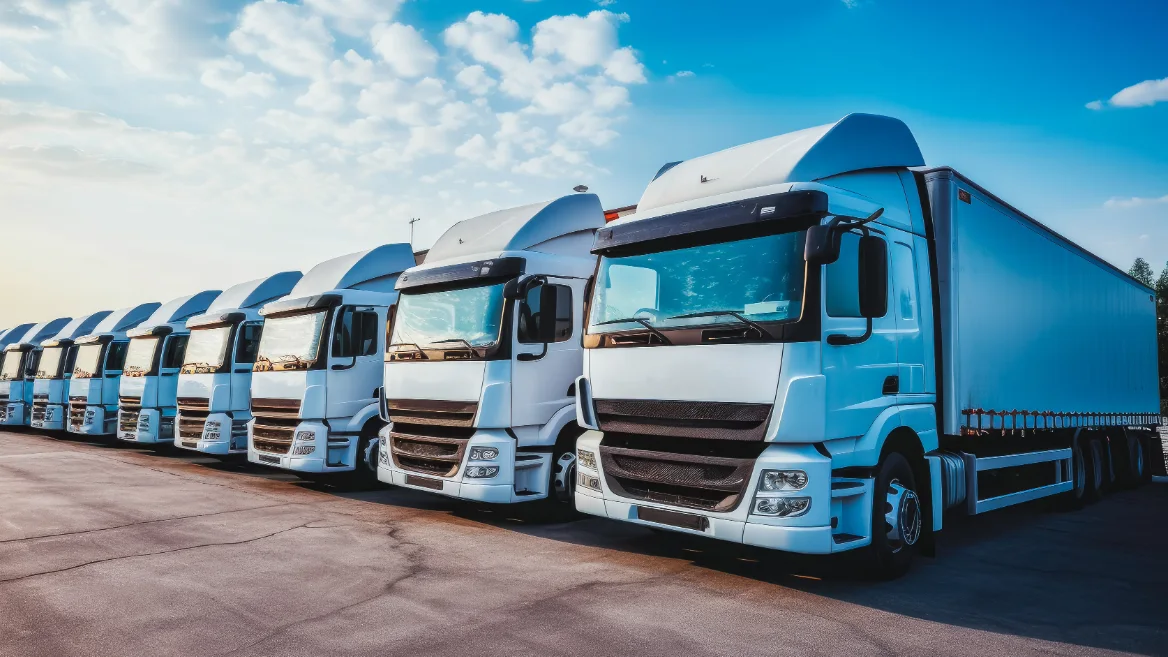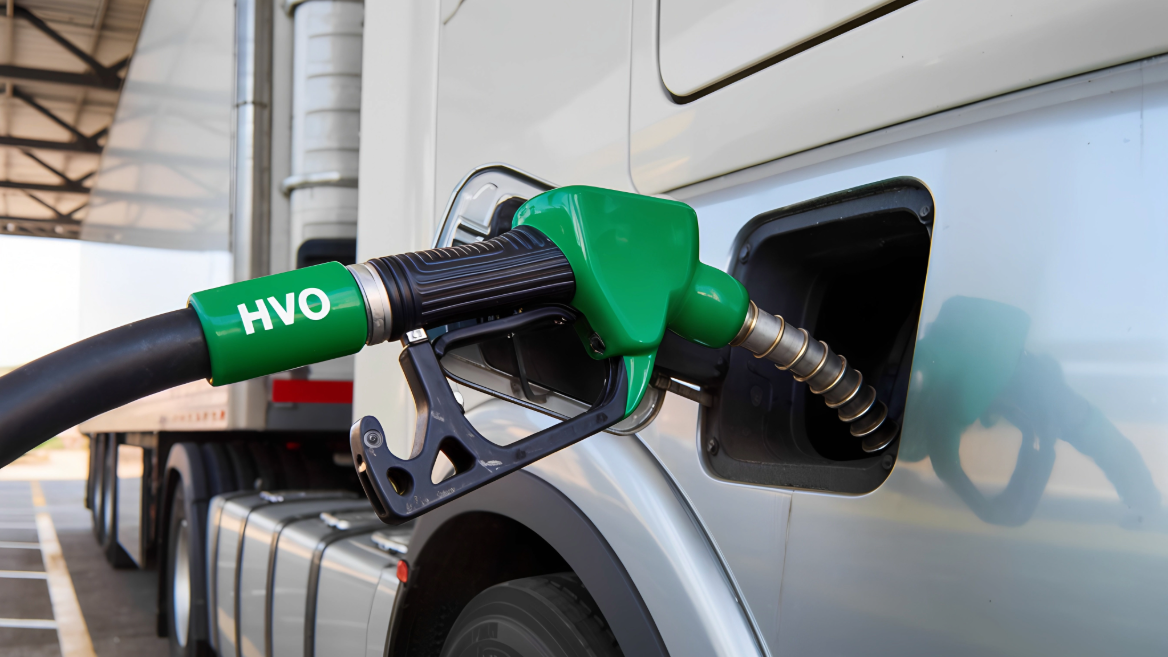Buying a used HGV can be one of the smartest ways to grow your fleet without overspending. But with so many factors to consider – from emissions standards to ownership checks – it’s easy to make an expensive mistake.
In this guide, we’ll cover everything you need to know before you buy a second-hand HGV, from understanding your operational needs to calculating long-term costs.
What we’ll cover
Fleets, bookings, subcontractors, compliance & payments.
With HX, you can manage them all in one place.
Buy new or second-hand – which is right for your business?
When it comes to expanding your fleet, deciding between a brand-new and a used HGV comes down to your priorities: cost, reliability, and flexibility.
Both have clear advantages — but also some trade-offs.
Buying a new HGV:
- Comes with a full manufacturer warranty and no prior wear.
- You’ll get access to a wider range of different lorry types.
- Meets the latest emissions and freight transport standards out of the box.
- Often includes telematics, safety tech, and low-emission compliance for cold chain transport and urban work.
- But you’ll pay a premium, wait longer for delivery, and face faster depreciation in the first few years.
Buying a used HGV:
- Much lower upfront cost, freeing cash for upgrades or extra drivers.
- Immediate availability — ideal for meeting new haulage contracts quickly.
- Easier to finance through finance or short-term leasing.
- May require checks on emissions, maintenance, and compliance to avoid future costs.
In short, buying new suits operators focused on long-term efficiency and minimal downtime. Buying a second-hand HGV suits those expanding fast or balancing cash flow.
1. Understand what you need before you buy
Before looking at vehicles, think about how your used HGV will be used day to day. The right choice depends on the type of work, routes, and loads you handle.
Things to consider:
- Operation type: Long-haul, regional, or last-mile deliveries.
- Body style: Rigid, tractor unit, or specialist vehicle such as a walking floor lorry.
- Payload and axle configuration: Match capacity to your contracts, not your ambitions.
- Fuel and emissions: Choose Euro VI to avoid daily ULEZ charges and lower HGV carbon emissions.
- Future-proofing: Consider compatibility with HVO fuel or hybrid systems.
Many buyers over-purchase – paying for capacity they rarely use. Focus on trucks that suit your routes and haulage contracts.

2. Check legal and identity documents
Before money changes hands, confirm the truck’s legal status and identity. A few quick checks can save you from disputes and hidden costs later.
Here’s what to check:
- VIN and registration: Cross-check on DVSA and HPI databases.
- MOT history: Look for consistent mileage and any recurring advisories.
- Finance and theft records: Use an HPI or NMR check to confirm the vehicle’s clear of outstanding finance.
- Imports: Confirm NOVA registration and a valid Certificate of Conformity or IVA approval.
- Ownership chain: Match the V5C with the seller’s business name and VAT status.
If you’re adding the truck to an operator’s licence, make sure it’s listed promptly to stay compliant with traffic commissioner requirements. Missing paperwork or gaps in history are warning signs.
3. Inspect the mechanical and technical condition
A used HGV that looks clean on the yard might still hide issues. A professional inspection is well worth the fee.
What to look for:
- Engine leaks or unusual smoke.
- Clutch wear and brake performance.
- Suspension and steering play.
- Corrosion on the chassis or cab.
- Tyre age (must be under 10 years on steering axles) and tread depth (minimum 1mm).
- Warning lights or diagnostic codes showing emission or DPF faults.
If possible, get an independent HGV mechanic to inspect the vehicle or run a full pre-purchase inspection. Ask for service records and brake test reports to confirm the truck’s been properly maintained.
You can also check that the truck meets DVSA annual test standards before completing the sale. A small cost upfront can save thousands in repairs later.
4. Stay compliant with UK and local standards
Regulations affect where and when you can operate a used HGV. Make sure the vehicle meets current and future requirements before you commit.
Emission and safety standards to check:
- ULEZ and Clean Air Zones: Vehicles must be Euro VI to avoid daily fees in cities like London, Birmingham, and Manchester.
- Direct Vision Standard (DVS): HGVs entering London need at least a 3-star rating or a Progressive Safe System retrofit.
- Weight and axle limits: Keep within legal limits for your configuration.
- Safety equipment: Cameras, conspicuity markings, and side guards might be mandatory in some areas.
Buying a cheaper, older truck can look like a saving, but the wrong emissions class can quickly eat into your profit through daily charges.
5. Calculate the total cost of ownership (TCO)
The sticker price only tells part of the story. To know the true cost of your used HGV, calculate its total cost of ownership over three to five years.
| Cost Area | What to Consider |
|---|---|
| Fuel economy | Compare Euro V vs Euro VI efficiency. |
| Maintenance | Check availability and price of spare parts. |
| Insurance | Factor in HGV insurance and risk profile. |
| Telematics | Integration with fleet management tools. |
| Road tax | Include annual HGV road tax costs. |
| Resale value | Euro VI trucks hold their value better. |
A slightly higher upfront price can mean lower running costs and downtime. Make sure you calculate everything before you commit.
6. Research the seller and buy with confidence
Not all sellers offer the same level of transparency. Whether you’re buying a used HGV from a dealer, auction, or private seller, trust and documentation matter.
Dealers and sellers:
- Franchised dealers: Usually offer warranties and service records.
- Independent traders: May have competitive prices but check documentation carefully.
- Fleet disposals: Often well-maintained and come with complete service histories.
Questions to ask:
- Can I see full service and repair records?
- Has the truck been used for light haulage or heavy work?
- Is the mileage consistent across MOT, tachograph, and service records?
- What’s the VAT and ownership status?
Use secure payment methods and always get a formal invoice for your used HGV. Avoid rushed transactions or pressure to pay deposits upfront.
What to do after buying a used HGV
Once the sale’s complete, a few administrative steps keep you on the road legally.
Post-purchase checklist:
- Transfer the V5C registration to your name or company.
- Add the vehicle to your operator’s licence.
- Set up HGV insurance and schedule routine maintenance.
- Pay HGV road tax and keep the receipt for records.
- Fit telematics or cameras to integrate with your yard management systems.
- If needed, refurbish the body, repaint the cab, or add safety features.
Some buyers also arrange HGV financing for upgrades for their used HGV, such as retrofitting camera systems or emissions controls.
Common buying mistakes to avoid
A few oversights can turn a good deal into a financial headache. Here are the mistakes to avoid when buying a used HGV:
- Not inspecting the vehicle in person.
- Failing to check emissions compliance before buying.
- Ignoring gaps in the service history.
- Buying without checking for outstanding finance.
- Forgetting to budget for the first maintenance cycle.
If the price seems too good to be true, it usually is.
Building a reliable, future-ready fleet
A well-chosen used HGV can serve your business for years. Think beyond today’s contracts and plan for long-term flexibility. Whether you’re just starting your haulage company, growing your operation, or specialising in niche freight, the right purchase supports your goals without overstretching your budget.
Used trucks play an important role in modern freight transport, helping operators balance costs while maintaining reliability. With the right approach, you can expand safely, reduce supply chain vulnerability, and strengthen your overall supply chain optimisation strategy.
And remember: the best truck isn’t just the one that’s cheapest today, but the one that fits your routes, haulage loads, and compliance obligations tomorrow.
Frequently asked questions
What’s the average mileage for a reliable used HGV?
Most operators look for trucks with under 500,000 miles, but mileage matters less than maintenance. A well-serviced high-mileage truck can outperform a neglected one.
Are used HGVs still subject to ULEZ or Clean Air Zone charges?
Yes. Unless they meet Euro VI standards, older trucks pay daily fees in most cities. Always check local authority websites before purchase.
Can I buy a used HGV through finance?
Yes. Many buyers use finance agreements to spread costs. Check interest rates, balloon payments, and ownership terms before committing.
What’s better for my business: a rigid or articulated truck?
It depends on your operation. Rigids suit regional and urban work, while tractor units offer flexibility for long-distance haulage contracts and different lorry types.
How can I reduce my running costs after buying?
Use telematics to track fuel use and schedule maintenance. Switching to HVO fuel where compatible can also reduce emissions and operating costs.



